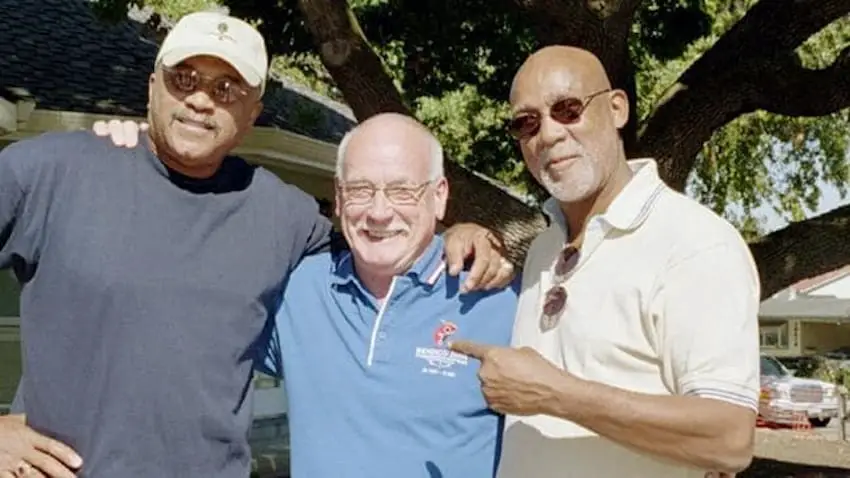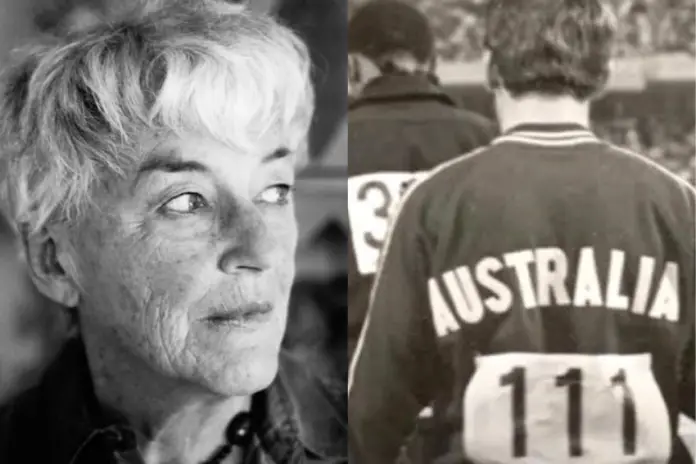Did you know that the third man on the podium when Tommie Smith and John Carlos made their famous Black Power salute at the 1968 Mexico City Olympics was Australian?
Did you know that one of Australia’s most distinguished historians was an authority on the Mexica and Maya people?
Peter Norman and Inga Clendinnen will forever be inextricably linked to Mexico, the former due to one memorable day in the Mexican capital, the latter because she dedicated years of her professional life to researching and writing about the country’s pre-Columbian peoples.
Both are deceased, but their legacy — forged in large part in and by Mexico — will live on.
Australian sprinter makes a stand against racism in Mexico City
The first Olympic Games to have ever been hosted in Latin America began on Oct. 12, 1968 in Mexico City, 10 days after the Tlatelolco massacre and six months after Martin Luther King was assassinated in Memphis.
Four days after the opening ceremony, the final of the men’s 200-meter race was held in the Olympic University Stadium, where United States athlete Tommie Smith won the gold medal, Peter Norman of Australia snatched the silver and John Carlos of the U.S. claimed the bronze.

Better remembered than the race is the medal ceremony, at which Smith and Carlos each raised a black-gloved fist as the Star-Spangled Banner played in what CNN described as “an act of defiance aimed at highlighting the segregation and racism burning back in their homeland.”
Before the ceremony, Norman reportedly told his fellow medal-winners: “I will stand with you.”
While he didn’t raise his fist, the then 26-year-old Australian demonstrated his support for the Black Power salute – and his opposition to racism and discrimination more broadly – by wearing an Olympic Project for Human Rights badge on his tracksuit jacket, as did both Smith and Carlos.
“My attitude was they’d earned the right to do what they thought they had to do with their one square meter of Olympic dais, and I was glad they were doing it, and glad I was with them,” Norman said in an interview.
All three athletes paid a heavy price for their protest in Mexico City on that autumn day in Mexico City more than 55 years ago.
“Smith and Carlos were sent home in disgrace and banned from the Olympics for life,” CNN reported, while Norman wasn’t selected in the Australian team for the 1972 Munich Olympics despite running times that qualified him to compete in both the 100 and 200-meter races.
“As soon as he got home he was hated,” said Matthew Norman, the athlete’s nephew.
“… He suffered to the day he died,” said Norman, who made a documentary film about his uncle called “Salute.”

Peter Norman died of a heart attack in 2006, and Smith and Carlos — who greatly appreciated his solidarity in Mexico City — served as pallbearers at his funeral and gave eulogies.
The BBC reported that “the Australian parliament made an official apology to Norman in 2012 for the treatment he received in the wake of the 1968 Olympics and recognized “‘the powerful role [he] played in furthering racial equality,'” while The Sydney Morning Herald said in October 2018 that Norman was “finally being recognized as the hero he deserves – and always wanted – to be.”
“About time, too. It’s only taken half a century,” the newspaper added.
The image of Norman on the podium with the two African-American sprinters is considered one of the most iconic photographs in history, and is one of Sports Illustrated’s “100 greatest sports photos of all time.”
The silent protest of the three Olympians was one of many demonstrations in Mexico City in 1968, a time when the Mexican student movement was fighting for greater political freedoms and for an end to the authoritarianism of the Institutional Revolutionary Party government, which, at the time, had already been in power for decades.
An “outstanding historian” inspired by the Mexica and Maya civilizations
Inga Clendinnen was a highly-decorated Australian author, historian and anthropologist who wrote books about the Maya and Mexica civilizations in addition to works on other topics.
Born in the Australian state of Victoria in 1934, Clendinnen was an “outstanding historian” whose “studies on the oppression of the Maya, on the Aztecs, and on the Holocaust, have used the craft of the anthropologist to describe violence’s cultural origin, conduct, and consequences,” according to the Dan David Prize.

Clendinnen was one of the winners of the prestigious and lucrative prize in 2016, the year of her death.
She is best known for her book “Aztecs: An Interpretation,” published in 1991, four years after an earlier work “
While her better-known book has “Aztecs” in its title, Clendinnen acknowledged that it is “more properly” about the “Culhua Mexica” people.
“I want to discover something of the distinctive tonalities of life as it was lived in the city of Tenochtitlán in the early sixteenth century on the eve of the Spanish conquest,” she wrote in its introduction.

“My interest is not primarily with the doings of the great and powerful or with the wisdom and aspirations of the elite, who unsurprisingly have generated most of the sources, but with some of the multiple ways in which ordinary Mexica men and women … made sense of their world,” Clendinnen continued.
“… There is one activity for which the ‘Aztecs’ were notorious: the large scale killing of humans in ritual sacrifices,” she added.
According to an obituary in The Sydney Morning Herald, Clendinnen “said she had found herself tossing down drinks early in the day” when writing “Aztecs” due to “the sheer horror of the material.”
“I mean there was blood everywhere. There were hearts everywhere,” she said.
The obituary also noted that “throughout her life-threatening illness” — Clendinnen suffered from autoimmune hepatitis for years — “she held onto the image of the Aztec warrior.”
“When I thought through the labyrinth of possibilities and memory and so on, I found at the very heart of the labyrinth a little Aztec warrior as the vision of how one ought to be in conditions of challenge,” she said.
“Stoical, self-possessed, consenting if it comes to death, as the only way to sustain your autonomy and your dignity.”
By Mexico News Daily chief staff writer Peter Davies ([email protected])
This article is the third in Mexico News Daily’s “Australia in Focus” series. Read about the history of relations between Australia and Mexico here and an interview with Australia’s ambassador to Mexico here.
